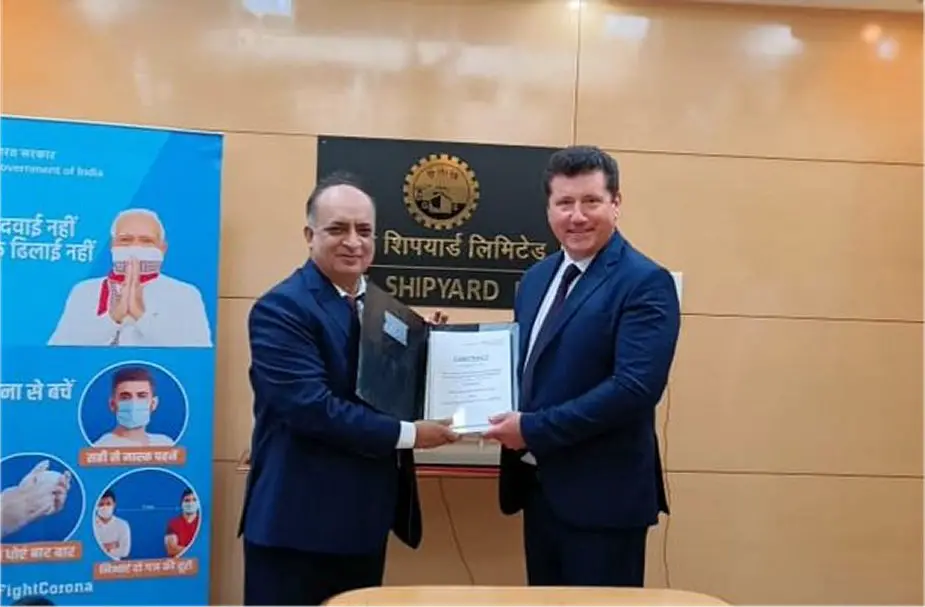Breaking news
Ukroboronprom to supply of turbo-power units for Indian Navy's frigates.
According to information published by Zorya-Mashproekt Gas Turbine Research and Development Complex on September 7, 2021, the state-owned enterprise, which is a part of Ukroboronprom State Concern, has signed a contract with India's Goa Shipyard Limited for the supply of two most up-to-date M7H2 units for the needs of the country's Navy.
Follow Navy Recognition on Google News at this link
 Signature of the contract (Picture source: R6Nationale)
Signature of the contract (Picture source: R6Nationale)
Turbo-power units shall be installed at new multi-purpose frigates, which will soon be built at the Indian shipyard. According to the contract, the first unit should be ready in December next year, the second one – in July 2023.
M7H2 units have an upgraded microprocessor control system, 58,000 horsepower and allow for the speed of 30 knots.
Goa Shipyard Limited is an Indian Government-owned shipbuilding company located on the West Coast of India at Vasco da Gama, Goa.
Over the past two weeks, Zorya-Mashproekt, Ukraine's designer and manufacturer of marine and industrial gas turbine plants, has signed contracts with Indian customers totaling about 100 mln USD.
In the future, Indian Navy will launch five more Nilgiri-class frigates and two more Talwar-class frigates.
The Nilgiri-class frigate or Project 17A is a follow-on of the Project 17 Shivalik-class frigate for the Indian Navy. A total of seven ships will be built at Mazagon Dock and GRSE.
This class will improve upon the earlier class in terms of stealth. They will have covered mooring deck and the number of antennae on the ship will be reduced by using EL/M-2248 MF-STAR AESA radar. The P17A will also feature better roll stabilisation and a discreet visual profile.
The weapon platform in the P17A ships will be compact and they will be armed with the Barak 8 and BrahMos. The weapon systems will be flush deck mounted allowing vertical launch of missiles from under the deck.
The crew complement will be reduced from the existing 257 (including 35 officers) to about 150 by using high levels of automation, which will reduce the operational costs by around 20 per cent and result in higher operational availability of the warships. The ship will have a displacement of 6,670 tonnes.




























